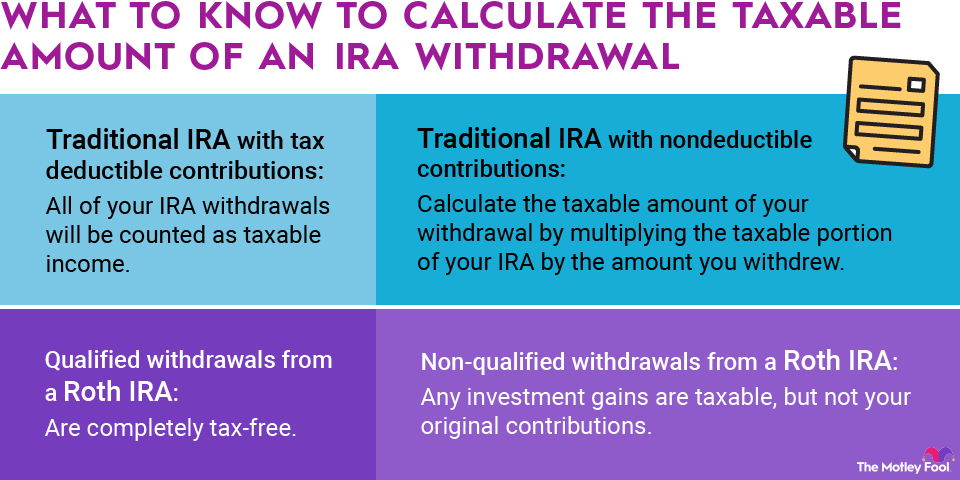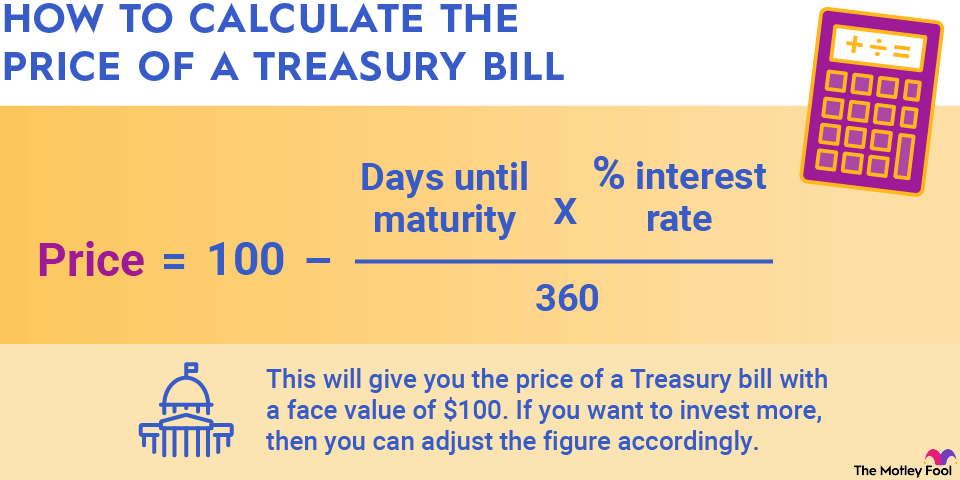Depending on the type of individual retirement account (IRA) you own, when you made your withdrawal, and whether your contributions were deductible, the taxable amount of an IRA withdrawal can vary significantly. Here's what you need to know to calculate the taxable amount of any withdrawal from a traditional or Roth IRA.

Withdrawals from a traditional IRA
If all your contributions to your traditional IRA were tax-deductible, the calculation is simple: All of your IRA withdrawals will be counted as taxable income. If you had any nondeductible contributions (uncommon), the calculation gets a little more complicated.
- You'll need to figure out how much of your account is made up of nondeductible contributions. Take the total amount of nondeductible contributions and divide it by the current value of your traditional IRA account -- this is the nondeductible (nontaxable) portion of your account.
- Next, subtract this amount from the number 1 to arrive at the taxable portion of your traditional IRA.
- Finally, multiply this number by the amount you withdrew from your traditional IRA. This is the taxable amount of your withdrawal.
For example, if you have a $100,000 traditional IRA and have made $15,000 in nondeductible contributions over the years, the nondeductible portion is 0.15. Subtracting this from 1 gives you 0.85 for the taxable portion of the account. If you decide to withdraw $10,000, multiplying that by 0.85 gives you a taxable IRA withdrawal amount of $8,500.
Withdrawals from a Roth IRA
Since Roth IRA contributions are made on an after-tax basis, qualified withdrawals are completely tax-free. A "qualified" Roth IRA withdrawal includes:
- A withdrawal of your original contributions at any time, for any reason
- Any withdrawal from your account after you turn 59 1/2 years old and your account has been opened for five years or more
If neither of these applies, your Roth IRA withdrawal is generally considered a nonqualified withdrawal, and any investment gains are taxable (but not your original contributions). There are three exceptions: You are disabled, you withdrew up to $10,000 to buy a first home, or the withdrawal was paid to your beneficiaries after death.
If you make a nonqualified Roth withdrawal, here's how to figure out the taxable portion.
First, add up all the contributions you've made to your Roth IRA since opening the account. Then, subtract any prior withdrawals of your contributions you've made. This represents the portion of your account that can be withdrawn tax-free at any time. Finally, deduct this amount from the amount of your Roth IRA withdrawal to calculate the taxable amount.
Related investing topics
For example, let's say that you've contributed $25,000 to your Roth IRA, have never made a withdrawal, and your balance is now $35,000, including investment profits. If you withdraw $30,000 prematurely, $25,000 of that amount is tax-free since it represents your original contributions. The remaining $5,000 of the withdrawal will be considered taxable income.
If you have any other questions about IRAs that we haven't covered here, take a look at our IRA Center. We can help you make the decisions that work best for your situation.

















